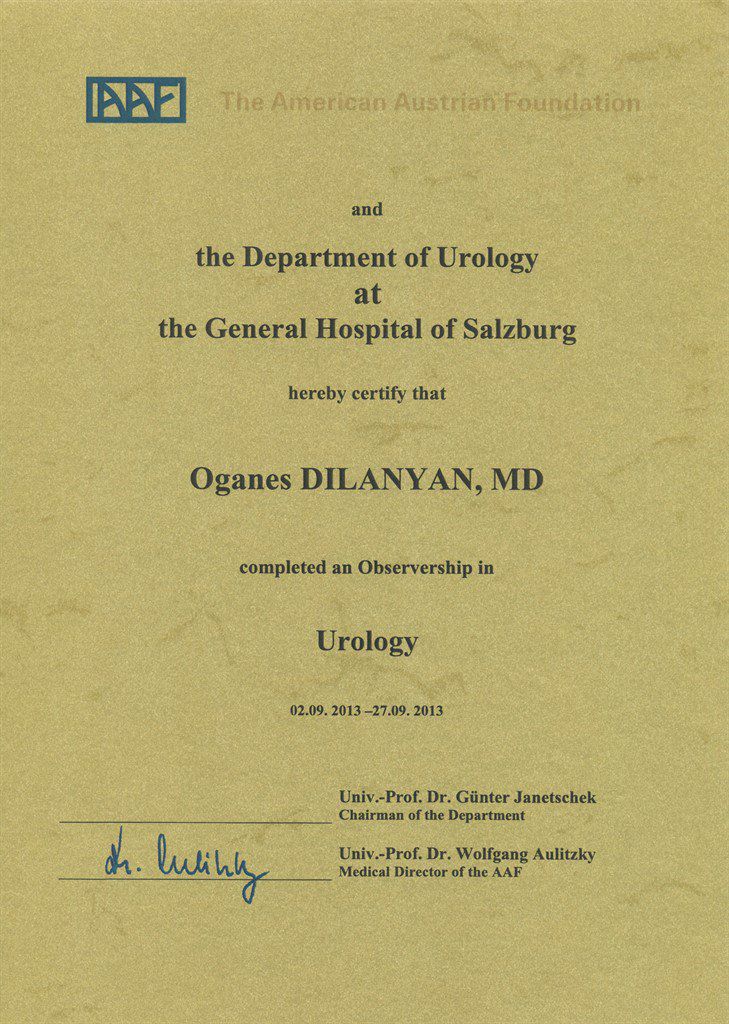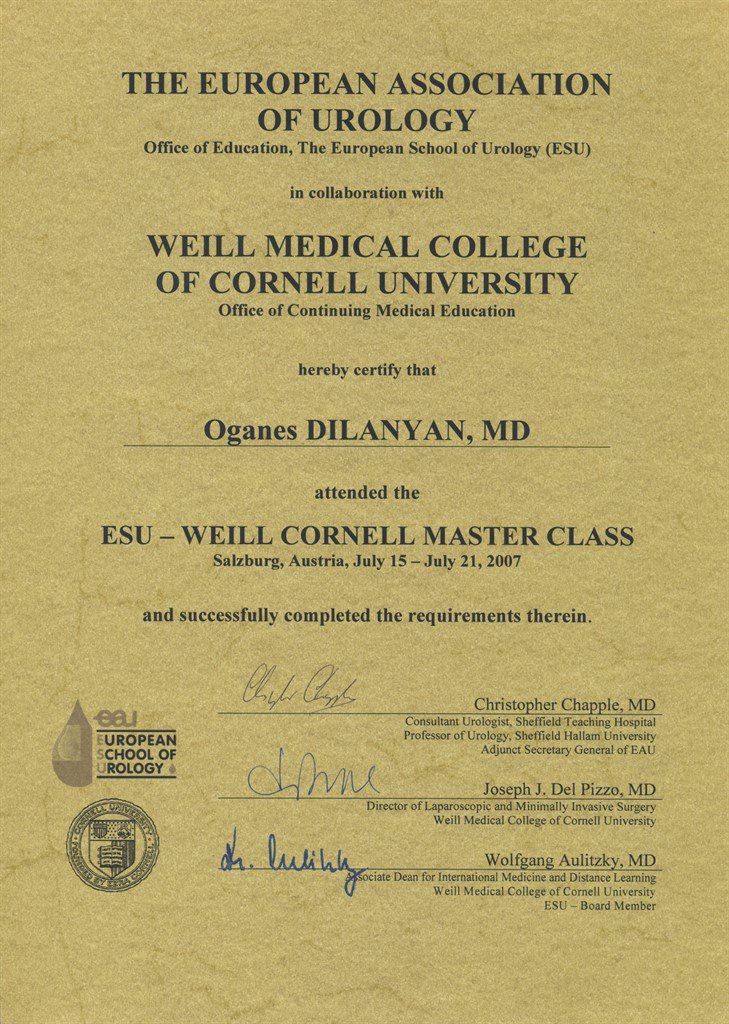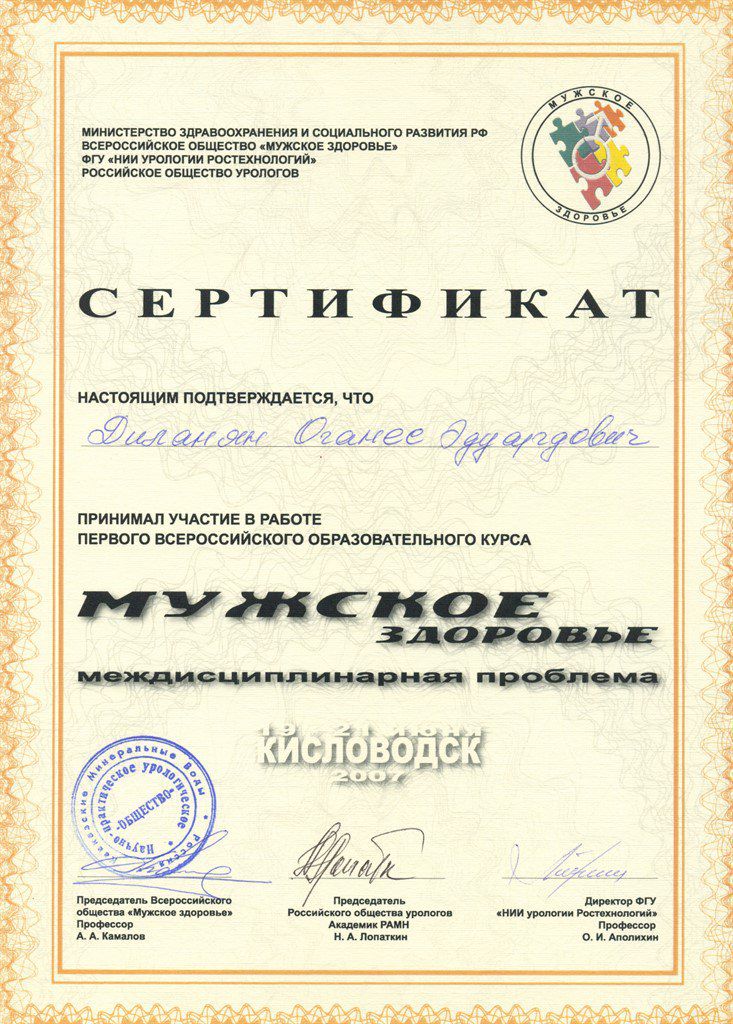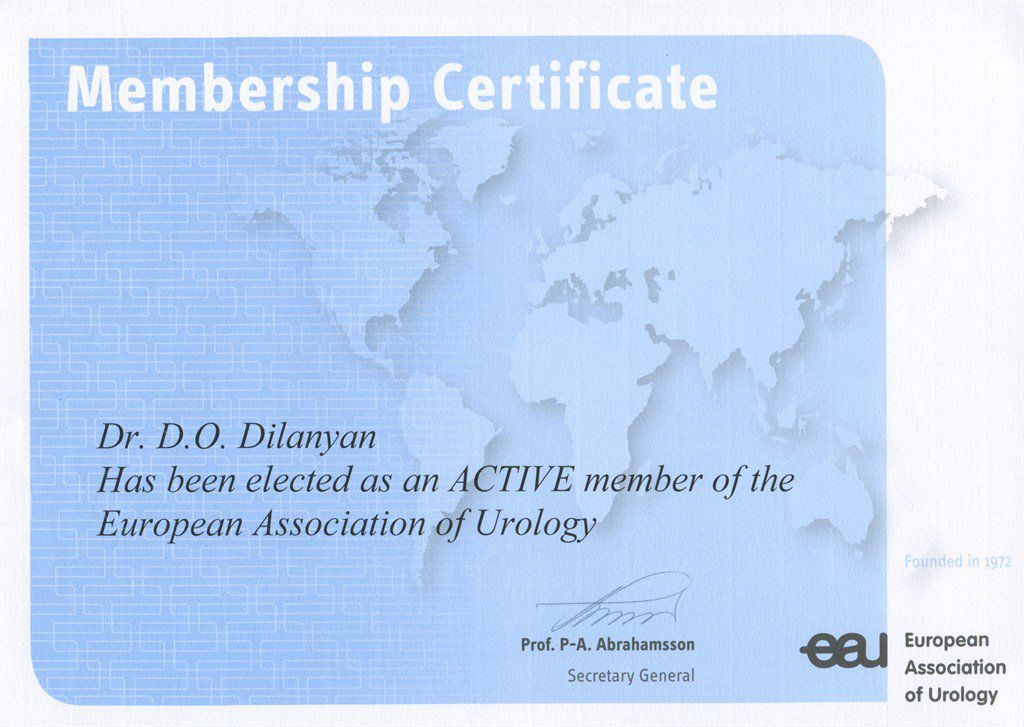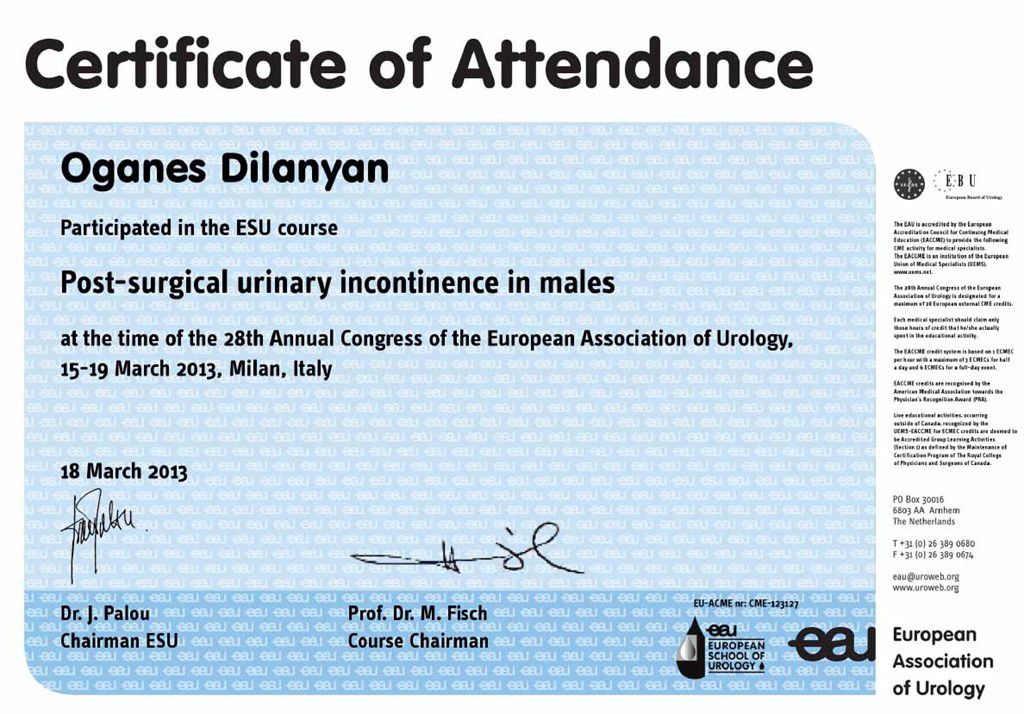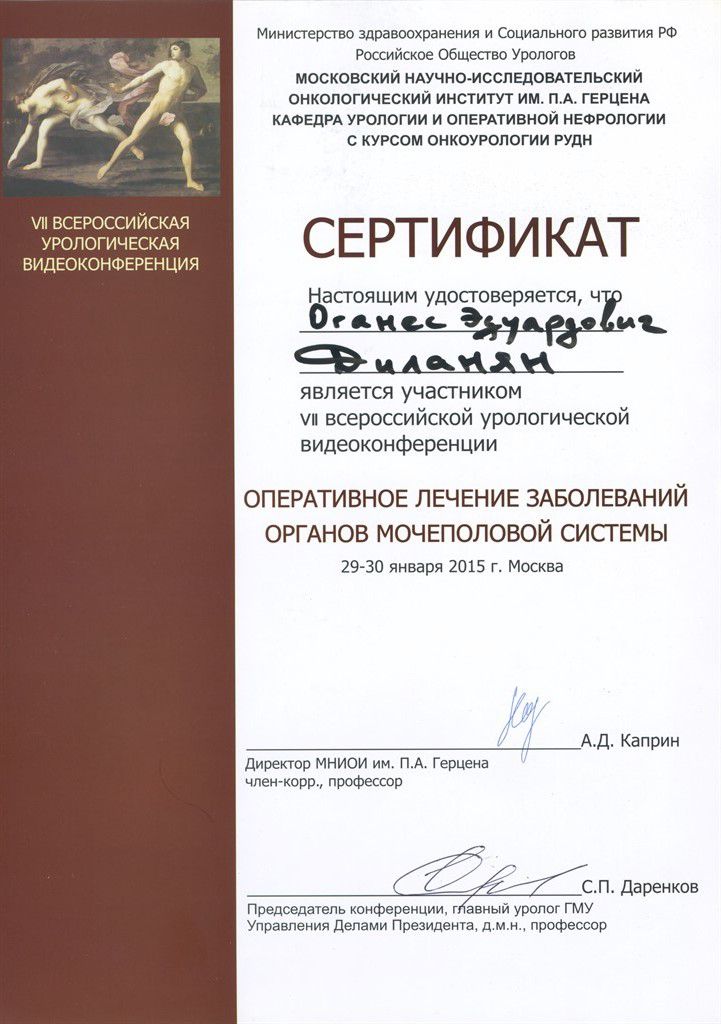Benign Prostatic Hyperplasia
Signs, symptoms and consequences of benign prostatic hyperplasia in men.
Benign prostatic hyperplasia is a condition that leads to disruption of urinary tract function due to growth of a benign tumour in the prostate. In this article I will tell you about the problems that this condition can cause and the modern way of treatment - plasma vaporization of the prostate.
Benign prostatic hyperplasia
Nature of this condition: this is the condition that makes a man get up to go to the toilet several times during the night and observe the urine flow getting weaker and weaker every month. What is worse is that one day the flow stops completely and acute urinary retention occurs. This means excruciating pain and the urge to urinate while being unable to do so. This in turn leads to a trip in an ambulance and a tube in the abdomen.
Surgery for benign prostatic hyperplasia
Unfortunately, often only the surgery can rid the patient of difficulty urinating and extreme sleep deprivation.
Plasma vaporisation of the prostate
- Is carried out through the urethra.
- Is superior to laser surgery for benign prostatic hyperplasia in terms of safety and effectiveness.
- Is safe for the heart
- The patient is admitted for only 3-4 days.
"Doctor my stream of urine is very weak”, “I keep waking up at night to go to the loo”, “I strain to urinate but cannot fully empty my bladder”, “I am tired of taking regular medication, I feel dizzy, my blood pressure drops and there is no point in even approaching my wife as I am unable to get an erection”. These are all typical complaints of my patients. Each of them translates the following though: Old age is here. Each of them is sick and tired of getting up 5-6 times a night to urinate, rushing out of a business meeting during the day in search of the nearest restroom and living in constant fear of the “urethra closing up completely” and developing acute urinary retention. More detailed information about this condition can be found in this article "Stages of benign prostatic hyperplasia"

What’s worse I sometimes have patients coming to me with a suprapubic urinary catheter which is basically a tube in the abdomen through which the urine passes. Most of these patients have already had to have surgery for groin hernia, which developed due to constant straining, and some are suffering side effects of regular medication such as dizziness, low blood pressure and sometimes even fainting episodes. Unfortunately, one can forget about having an erection while undergoing medicinal treatment for benign prostatic hyperplasia. And the worst-case scenario is these symptoms can indicate prostate cancer.
Benign prostatic hyperplasia is enlargement of prostate gland and growth which in turn leads to disruption of urine flow. It is not considered to be a tumour therefore the name has been changed to “benign prostatic hyperplasia”.
Professor A. Pytel
Let’s think about what happens to the urinary tract with the tissue growth. The narrowing of the urethral diameter leads to the bladder having to contract harder. After quite a short period of time it becomes near impossible and the bladder is not emptied even with straining. This is why the patient needs frequent trips to the toilet. The bladder simply does not have enough space to hold all the urine.
What happens next is urinary stagnation leads to bladder stones forming which paired with infection leads to general ill health and finally the disruption of urine flow interferes with the kidney function. Unfortunately, chronic kidney insufficiency is not uncommon in the presence of this condition. In extreme cases acute urinary retention occurs as a result of complete closure of the urethra. When this happens extreme urge to urinate combined with considerable pain make the person strain but straining no longer leads to urination. In this situation only emergency hospital admission with bladder catheterisation also known as epicystostomy can bring relief
“Benign prostatic hyperplasia does not only make urination difficult but also leads to impaired kidney function”.

…I have achieved most things in life. Brought up and educated my children, have a very successful job, have a house and a car. But who needs all this when one has no health. I can’t get enough sleep having to get up 3-4 times every night. My wife jumps every time I get up…. The man who has come to see me is 57 years old. But he looks not much younger than 70. Dark circles around his eyes, exhausted face after all the sleep deprivation would age anyone.
- How is your urine flow? – I ask him?
- Weak, - he replies, - And I have to shake it for ages after I finish but still have the feeling the bladder is not quite empty.
- And how long ago did it start?
- About 5 years ago
- I see. Let’s have an ultrasound.
Adenoma size is about 75ml. The amount of retained urine is over 100 ml. The process of urination is obstructed and the maximum flow speed is 4.8 ml/second. I look at him quite concerned.
- I am afraid medication is not going to help here. Only surgery.
- I have tried all possible medication, doctor, replies the patient. Half of them cause dizziness, another half makes me impotent. Maybe more radical methods are indeed required.
Benign prostatic hyperplasia diagnosis
In our clinic with the latest hi-tech equipment prostate conditions diagnosis takes around 20 minutes.
Способы диагностики аденомы простаты
Ultrasound combined with transrectal ultrasound allow us to accurately determine the size of the prostate. The norm is around 20ml. Unfortunately, very often we come across adenomas that are larger than 100 cm3. The size plays a decisive role when choosing the type of surgery.
Another factor is the volume of retained urine. If it exceeds 50 ml this points to contractile dysfunction of the bladder. Unfortunately, in this case the only way is surgery as any drug treatment is doomed to failure.
Uroflowmetry allows us to gain insight into objective data about functional disturbance. The patient urinates into a special container and the following parameters are measured by the computer: speed and type of urine flow, straining etc.
Clinical urine test allows us to assess quite a few things, such as determining the presence of white blood cells in the urine and protecting the patient from post-operative inflammation.
PSA (prostate specific antigen) blood test is performed to rule out prostate cancer which often has urination disorders as symptoms.
Digital rectal examination of the prostate is the “gold standard” and allows us to rule out prostate cancer and evaluate a set of parameters.
Treatment of benign prostatic hyperplasia
Modern treatment methods include both drug and surgical treatment. Drug treatment usually consists of prescribing two types of medicines: one relaxing the neck of the bladder and allowing for better urine flow and another decreasing the size of the prostate. Diagnostic methods mentioned above allow us to predict with some accuracy how effective the treatment is going to be. One should not forget however that often drug treatment is lifelong. Unfortunately, our own experience and experience of our colleagues in the west as well as recommendations from various associations suggest that the effect of all drugs available to date does not last long and most patients suffer from various side effects.
Prof. Gabor
Benign prostatic hyperplasia removal surgery
Today most surgical interventions concerning benign prostatic hyperplasia are carried out laparoscopically with no cuts, via the urethra. And if in the past the surgeon only had the option of transurethral resection or open surgery now we can offer our patients plasma vaporisation of benign prostatic hyperplasia. This method is widely used in European countries and the US due to being highly effective and very safe.
Plasma or laser vaporisation of the prostate?
- According to the data provided by European Association of Urology plasma vaporisation of the prostate is superior to all the other forms of surgery in terms of effectiveness, safety and absence of side effects.
- Plasma vaporisation is superior to laser surgery for benign prostatic hyperplasia due to much lesser blood loss and near absence of post-operative urethral stricture and incontinence.
- Plasma vaporisation can even be used in cases involving large adenomas and in patients with heart disease.
Преимущества плазменной вапоризации аденомы
Plasma vaporisation is even better than laser surgery for benign prostatic hyperplasia because it allows us to remove all of the affected tissue without a long post-operative recovery period. Following laser surgery patients often suffer from persistent side effects such as pain and frequent urination as the laser does not vaporise as deep into the tissue as plasma treatment does.
Plasma vaporisation of the prostate is carried out through the urethra without any incisions which makes it first choice even when presented with a large prostatic growth. Plasma vaporisation of the prostate turns complicated open surgery into an endoscopic procedure with zero blood loss.
Natural saline solution is used during plasma vaporisation and no electricity is passed through the patient’s body which makes this surgical procedure suitable for patients with heart disease and even those with a pacemaker. This makes plasma vaporisation superior to transurethral prostate surgery.
Compared to other surgical procedures for treatment of benign prostatic hyperplasia plasma, vaporisation of the prostate is the most bloodless as plasma securely seals the blood vessels.
Plasma vaporisation of the prostate is the only type of surgery after which the catheter can be removed from the patient after 48 hours following the operation and a day later the patient can be discharged.
Plasma allows the removal of all of the affected tissue which guarantees that the condition will not return. Patients also do not suffer from urinary incontinence following vaporisation of the prostate surgery.
Plasma vaporisation of the prostate is the operation of choice for most patients with benign prostatic hyperplasia.
Plasma vaporisation of the prostate is highly effective and minimally traumatic for patients which makes it the procedure of choice for most patients.
We still offer laparoscopic surgery to the patients with gigantic prostate size exceeding 200gr. This surgery is performed without incisions and consists of 3-4 punctures. Patients can be discharged after 3 or 4 days following the operation and return to work after a week.

Following benign prostatic hyperplasia surgery.
- Hello doctor, may I come in? The patient stands in the doorway smiling. It has been 3 months since his surgery.
- Please come in, - I smile back. Take a seat. How are you? You are looking much better.
- You don’t say! I no longer get up to go to the toilet during the night and get enough sleep. I go to the toilet 3-4 times a day on average. Everything is great with my wife and I urinate like an 18-year-old, I can put a fire out with it. I have just come to see you for a follow up.
The follow up consisting of an ultrasound scan and uroflowmetry to confirm that my patient is healthy.
Professional approach: up to date and trauma free treatment of benign prostatic hyperplasia.
Our Team: Highly professional surgical team certified in Europe.
Board of doctors: For your safety in the event of pre-existing and underlying conditions.
Our equipment: Olympus Plasma vaporisation equipment and Karl Storz resectoscope.
Comfort: no queueing or waiting for a consultation and premium inpatient facility.
Safety: Plasma vaporisation of the prostate is recommended by the European Association as the safest surgical procedure.
Result: Elimination of benign prostatic hyperplasia and its complications.
We are also GCP certified, which confirms we provide the highest standards of diagnosis and treatment
- We use the latest German made endoscopic equipment by Karl Storz and Japanese plasma generator Olympus with high safety standards which allows us to guarantee no equipment related complications.
-Andrology surgical work placements at the Munich University Hospital and plasma technology applications in Austria as well as professional experience of performing over 400 transurethral surgeries guarantee highest quality and excellent results.
- We guarantee your safety by using modern and highest quality anaesthesia manufactured in Austria or France.
- We DO NOT USE low quality equivalents of any drug which significantly lowers the risk of any complications.
- We DO NOT REFER our patients to unknown clinics for follow up and further treatment and provide outpatient follow up as well as inpatient treatment.
If you require treatment for benign prostatic hyperplasia in Moscow please contact us. We will arrange admission to hospital on the same day you arrive and will carry out all the necessary tests and investigations and perform the surgical procedure as soon as possible. You will be able to return home after 5-6 days.










